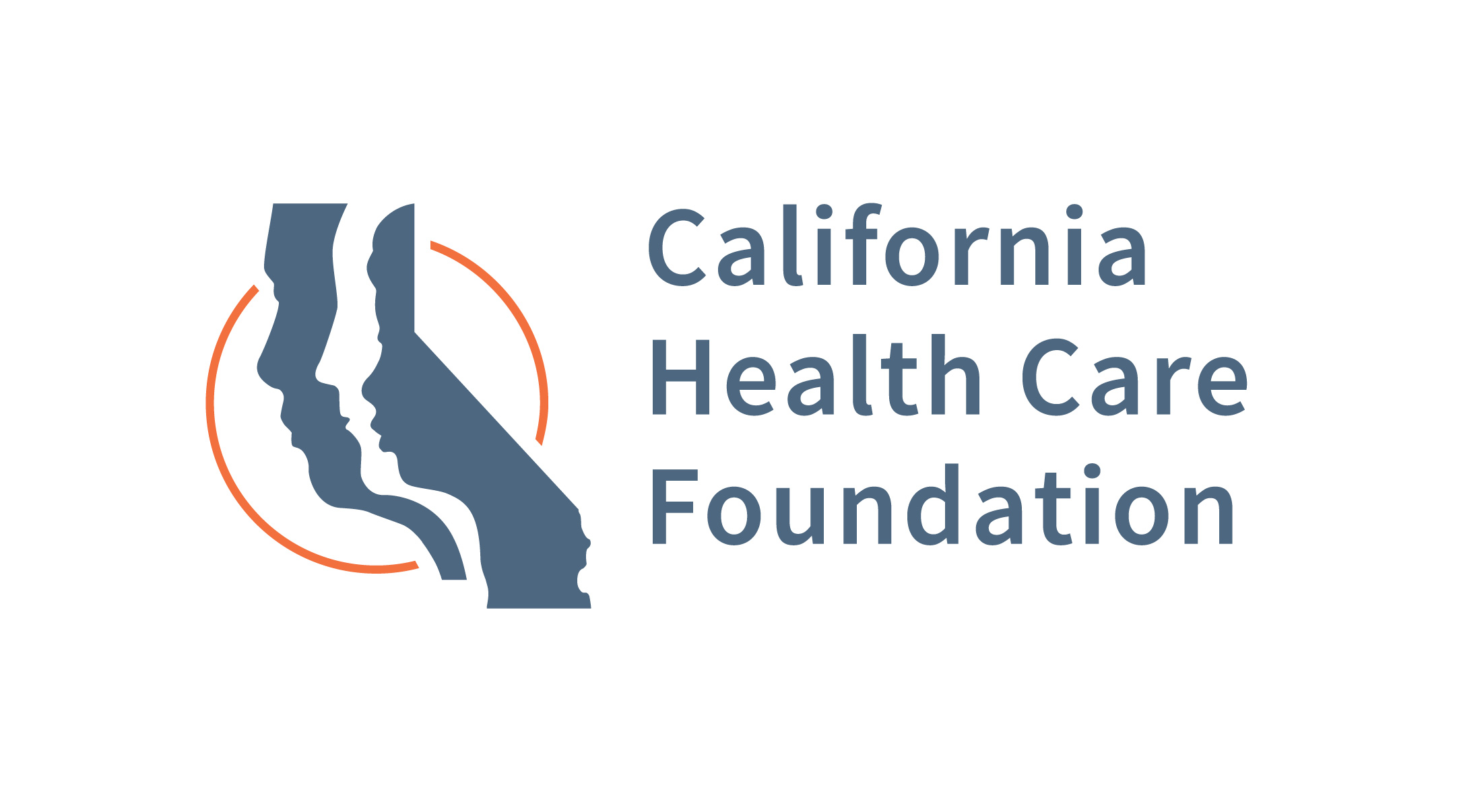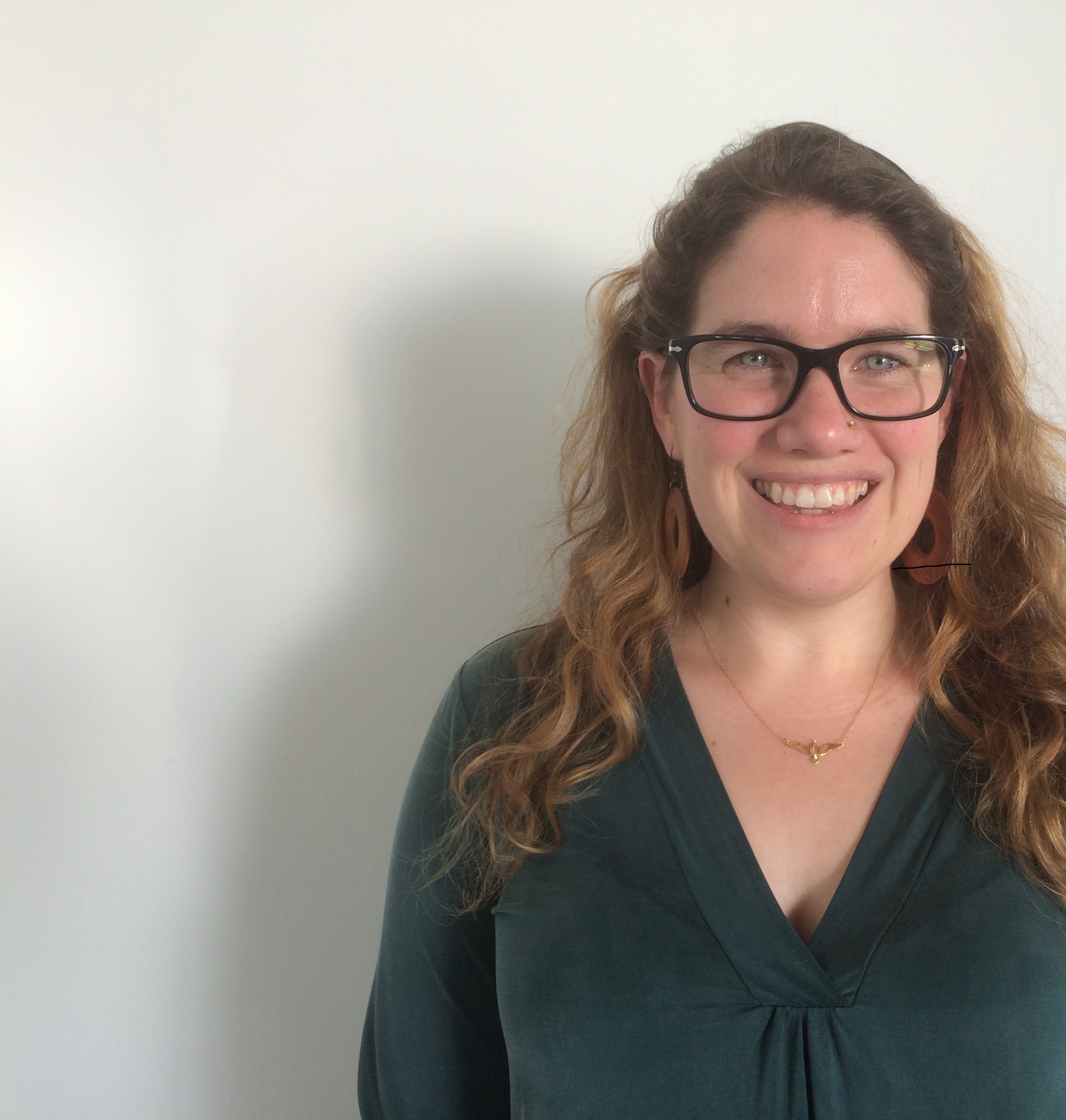You've reached the 2016 Data on Purpose conference page.
For details about the 2017 Data on Purpose | Do Good Data conference, please visit ssirdata.org.
February 9-10, 2016
Frances C. Arrillaga Alumni Center
326 Galvez St.
Stanford, CA USA
#dataonpurpose
Impact Sponsor:
Quick Links
Conference Overview | Agenda | Sessions | February 10 Intensives | Confirmed Speakers | Rates and Registration | Conference Facility and Location | Lodging | Host & Sponsors | Privacy Policy | Cancellation Policy | Contact Information
Conference Overview
Stories have always been an effective way to transmit the human experience. But in today’s world stories that incorporate data and analytics are more convincing than those based only on anecdotes or personal accounts. Translating and presenting complex digital information to persuade, inspire trust, and lead change in the social sector requires powerful storytelling skills that go far beyond infographics and data visualizations. Excellent data storytellers combine data and analytics with a point of view along with examples that reveal the meaningful story hidden within the data.
February 9-10, 2016, join Stanford Social Innovation Review and a lineup of expert data storytellers—including journalists, technology innovators, computer scientists, data visualization designers, and professional communicators for practical tips, powerful ideas, and the latest strategies for creating data-driven storytelling for your organization.
- Turn insights into stories that can drive decision-making within your organization and attract funders
- Learn how to make your data storytelling more interactive and compelling by connecting logic with emotion and learn how to identify when it’s not appropriate to use data to communicate an idea
- Discover different storytelling platforms, and learn when and how to use them
- Understand how to extract data from various sources like social media and Google Analytics, and other open sources to create outstanding data visualizations that convey a trend or a story
February 9, 2016 Agenda
| Time | Session | Speakers |
| 8:00-8:50 a.m. |
Registration |
|
| 8:50-9:00 a.m. | Welcome from Stanford Social Innovation Review | |
| 9:00-9:55 a.m. | Jake Porway, Founder and Executive Director, DataKind | |
| 9:55- 11:00 a.m. |
Grabbing the Attention of Stakeholders Through Powerful Data Storytelling Techniques |
Sacha Litman, Managing Director, Measuring Success |
| 11:00- 11:30 a.m. |
Break | |
|
11:30 a.m.- |
Combining the Magic of Storytelling with the Best Practices in Data Visualization |
Cole Nussbaumer Knaflic, Founder, Speaker, Author, Storytelling with Data |
| 12:30-1:30 p.m. | Lunch (Copies of Cole Nussbaumer Knaflic's book on sale by registration.) |
|
| 1:30-1:45 | Guided Tour of digitalIMPACT.io |
Lucy Bernholz, Senior Research Scholar, Center on Philanthropy and Civil Society, Stanford University; Colleader, Digital Civil Society Lab |
| 1:45-2:45 p.m. | Panel: The Nonprofit Storytelling High Wire Act: Balancing Quantitative and Qualitative Data |
Jasmine Marrow, Director of Nonprofit Strategy, GuideStar Peter Manzo, President and CEO, United Ways of California Lauren Shaughnessy, Director of Measurement and Learning, Habitat for Humanity Greater San Francisco |
| 2:45-3:45 p.m. |
Cheryl Phillips, Investigative Data Journalist; Hearst Professional in Residence, Graduate Program in Journalism, Stanford University |
|
| 3:45-4:00 p.m. | Break | |
| 4:00-5:00 p.m. | Whose Story Are We Telling? |
Andrew Means, Cofounder, The Impact Lab |
| 5:00-6:30 p.m. | Networking Reception | |
February 9, 2016 Plenary Session Descriptions
Practice Safe Stats! A PSA
Jake Porway, Founder and Executive Director, DataKind
The real power of data storytelling lies not just in reporting on past activity, but in making decisions that drive toward the future. However, knowing what the data is or is not saying is critical to creating ethical and accurate visualizations. In this keynote, Jake Porway shares best practices for data storytellers, explaining the pitfalls of pie charts, why you should be wary of word clouds and why good data storytelling ultimately means good statistics.
Grabbing the Attention of Stakeholders Through Powerful Data Storytelling Techniques
Sacha Litman, Managing Director, Measuring Success
In this session, we will explore how data and anecdote are processed in the brain, and can be used to inspire decision-making and action. We will explore the frameworks and principles for how to share effective data stories, and understand the pitfalls to avoid in data storytelling. You will apply these tangible ideas through breakout exercises at your table.
Combining the Magic of Storytelling With the Best Practices in Data Visualization
Cole Nussbaumer Knaflic, Founder, Speaker, Author, Storytelling With Data
Stories resonate and stick with your audience in ways that data alone does not. Why wouldn’t you leverage the power of story when communicating with data? Join this engaging session, during which Cole Nussbaumer Knaflic discusses the untapped potential of combining the magic of story with best practices in data visualization for communicating effectively with data. Being able to tell stories with data is a critical skill in our world of ever-increasing data and desire for data-driven decision making. An effective data story can mean the difference between success and failure when it comes to communicating the findings of your study, raising money for your nonprofit, presenting to your board, or simply getting your point across to your audience. You’ll leave the session ready and excited to tell stories with your data.
The Nonprofit Storytelling High Wire Act: Balancing Quantitative and Qualitative Data
Jasmine Marrow, Director of Nonprofit Strategy, GuideStar
Peter Manzo, President and CEO, United Ways of California
Lauren Shaughnessy, Director of Measurement and Learning, Habitat for Humanity Greater San Francisco
Jasmine Marrow, Peter Manzo and Lauren Shaughnessy will discuss the importance of using both qualitative and quantitative data to tell an organization's complete story. Jasmine Marrow will highlight the importance of nonprofits sharing these metrics and how it benefits individual organizations and the sector overall. From there, she will provide a first-look at GuideStar’s upcoming launch of the Platinum level of their Nonprofit Profiles, a new way for nonprofits to tell their stories—through quantitative outcome and output based metrics. Jasmine Marrow will also be joined by Peter Manzo and Lauren Shaughnessy for an interactive panel discussion to learn how they are successfully using both qualitative and quantitative metrics to tell their story and grow as organizations.
Data Mining for Crafting Cohesive Narratives
Cheryl Phillips, Investigative Data Journalist; Hearst Professional in Residence, Graduate Program in Journalism, Stanford University
To tell a story well you have to start with the research. How do you place your organization in context with others and how do you show how it stands apart? You can find the answers in a variety of sources, in knowing how to find trends and outliers and then how to choose the best of those to craft a cohesive narrative. This session will lay out research sources for non-profits, techniques for mining data for important details and tips on how to craft your story. It also will cover how being transparent makes it easier to get your mission across and to enable others to find and communicate about your organization. The session will end up with a roundup of key websites for research and quick demos of free tools for finding and working with data effectively for analysis and visualization.
Whose Story Are We Telling?
Andrew Means, Cofounder, The Impact Lab
Stories have a role to play in our organizations. We can effectively use stories to raise funds and motivate our teams. Stories are central to our own understanding of ourselves and our work. But what if we are telling ourselves the wrong stories? If we imagine that our organizations have a normal distribution of impact, meaning we have little to no effect on some people in our programs, a moderate effect on the majority of people, and great effect on some small group, whose stories do we tend to gravitate towards? We try and find the person farthest out on the distribution. The person whose change looks nothing like the majority of people in our programs. In a world increasingly reliant on data, we are not going to be able to get away with this. When we are able to accurately quantify our impact we need to be careful about when and how we turn to the dramatic stories. We can't sell the picture of a gourmet burger and deliver McDonalds. Throughout the talk Means will hit on important ideas in even thinking about impact (counterfactuals, displacement, etc.) but the crux of it will be this idea around stories and how in a world that is increasingly relying on data (and data that is bringing transparency around impact) we might want to think differently about the stories we choose to tell ourselves, our funders, etc.
February 10, 2016 Intensives (Additional Fee)
Using Stories and Data to Engage Local Communities and Decision-Makers
Perla Ni, Founder and CEO, GreatNonprofits
Andy Krackov, Associate Director for External Engagement, California Health Care Foundation
Michelle Levander, Founding Director, Center for Health Journalism, Annenberg School of Journalism, University of Southern California
Stories and data are changing the nonprofit and philanthropy landscape. In this workshop, you will gain insight on new ways in which those stories and data can be collected and inform community decision-makers. You will hear concrete examples about how affordable and convenient technology can be used to tell the stories and experiences of communities. You will hear about how the availability of stories and data is changing the nonprofit and philanthropy landscape at the community level.
Move from Data Geek to Curator
Sarah Newhall, Executive Vice President, Strategy & Insights, Blue State Digital
Chris Royalty, Executive Creative Director, Blue State Digital
Sarah Twombly, Strategy Director, Blue State Digital
There are so much data and so many data types it can be difficult to differentiate the right information and the right way to display it. A great data storyteller is like an art curator-she knows what information is most impactful. Who is your audience? What do you want the audience to feel? Which data tell the best story?
Social Media and Storytelling
Ritu Sharma, CEO and Cofounder, Social Media for Nonprofits
Nonprofits, NGOs, funders, and changemakers are increasingly leveraging social media platforms like Instagram to engage with audiences. In this session learn some of the latest ways to leverage these platforms to tell your organization's story, how to get others to share your stories, and most importantly how you you can capture the power of your own communities and their followers.
Confirmed Speakers
Lucy Bernholz, Senior Research Scholar, Center on Philanthropy and Civil Society, Stanford University; Coleader, Digital Civil Society Lab
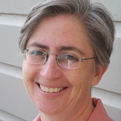 Lucy Bernholz is a philanthropy wonk trying to understand how we create, fund, and distribute shared social goods in the digital age—what she calls the future of good. She writes extensively on philanthropy, technology, information, and policy on her blog,philanthropy2173.com. Bernholz is a senior research scholar at the Stanford University Center on Philanthropy and Civil Society, where she co-launcheded the Digital Civil Society Lab. She was also a visiting scholar at The David and Lucile Packard Foundation, where she wrote a book while also working with Foundation colleagues to think about foundations in the digital age.
Lucy Bernholz is a philanthropy wonk trying to understand how we create, fund, and distribute shared social goods in the digital age—what she calls the future of good. She writes extensively on philanthropy, technology, information, and policy on her blog,philanthropy2173.com. Bernholz is a senior research scholar at the Stanford University Center on Philanthropy and Civil Society, where she co-launcheded the Digital Civil Society Lab. She was also a visiting scholar at The David and Lucile Packard Foundation, where she wrote a book while also working with Foundation colleagues to think about foundations in the digital age.
Andy Krackov, Associate Director for External Engagement, California HealthCare Foundation
 Andy Krackov is associate director of external engagement at California Healthcare Foundation (CHCF), where he guides organization-wide efforts to understand and engage CHCF’s external partners. Krackov's grantmaking work focuses on encouraging government to improve access to health care data through CHCF's Free the Data initiative. Prior to joining CHCF, Krackov worked at the Lucile Packard Foundation for Children's Health, where he was instrumental in establishing the Kidsdata.org website. Krackov received a bachelor's degree in history from Washington University in St. Louis and a master's degree in communication theory from Stanford University.
Andy Krackov is associate director of external engagement at California Healthcare Foundation (CHCF), where he guides organization-wide efforts to understand and engage CHCF’s external partners. Krackov's grantmaking work focuses on encouraging government to improve access to health care data through CHCF's Free the Data initiative. Prior to joining CHCF, Krackov worked at the Lucile Packard Foundation for Children's Health, where he was instrumental in establishing the Kidsdata.org website. Krackov received a bachelor's degree in history from Washington University in St. Louis and a master's degree in communication theory from Stanford University.
Michelle Levander, Founding Director, Center for Health Journalism, Annenberg School of Journalism, University of Southern California
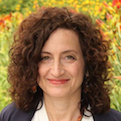 Michelle Levander is founding director of the USC Annenberg School of Journalism’s Center for Health Journalism. The Center forges news partnerships to help journalists nationwide to produce ambitious, richly investigated health stories. More than 800 journalists have participated in the center’s Fellowships since 2005, producing projects that have won awards, changed policy, sparked community conversations and change. The Center hosts an online community that features writings of journalists, policy thinkers and clinicians. A veteran reporter and editor, in the US and abroad, Levander has received journalism awards from the Overseas Press Club of America, the Inter American Press Association, and the Society of Professional Journalists L.A. She spent a year in Mexico as an Inter American Press Association Fellow and is a graduate of the Columbia University Graduate School of Journalism and UC Berkeley.
Michelle Levander is founding director of the USC Annenberg School of Journalism’s Center for Health Journalism. The Center forges news partnerships to help journalists nationwide to produce ambitious, richly investigated health stories. More than 800 journalists have participated in the center’s Fellowships since 2005, producing projects that have won awards, changed policy, sparked community conversations and change. The Center hosts an online community that features writings of journalists, policy thinkers and clinicians. A veteran reporter and editor, in the US and abroad, Levander has received journalism awards from the Overseas Press Club of America, the Inter American Press Association, and the Society of Professional Journalists L.A. She spent a year in Mexico as an Inter American Press Association Fellow and is a graduate of the Columbia University Graduate School of Journalism and UC Berkeley.
Sacha Litman, Managing Director, Measuring Success
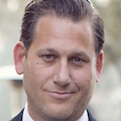 Sacha Litman is the managing director of Measuring Success, a firm whose mission is to help foundations and nonprofits harness the power of data to move the needle on impact. Litman is also president of the Fund for Big Data in Philanthropy, which educates funders on Big Data and catalyzes data technology projects in the sector. Litman holds an MBA from Kellogg (Northwestern), an MPA from Harvard Kennedy School, and a bachelor’s degree from Yale University. Litman has worked for McKinsey and Company and Credit Suisse, and was director of strategy and performance measurement for an international nonprofit organization.
Sacha Litman is the managing director of Measuring Success, a firm whose mission is to help foundations and nonprofits harness the power of data to move the needle on impact. Litman is also president of the Fund for Big Data in Philanthropy, which educates funders on Big Data and catalyzes data technology projects in the sector. Litman holds an MBA from Kellogg (Northwestern), an MPA from Harvard Kennedy School, and a bachelor’s degree from Yale University. Litman has worked for McKinsey and Company and Credit Suisse, and was director of strategy and performance measurement for an international nonprofit organization.
Pete Manzo, President and CEO, United Ways of California
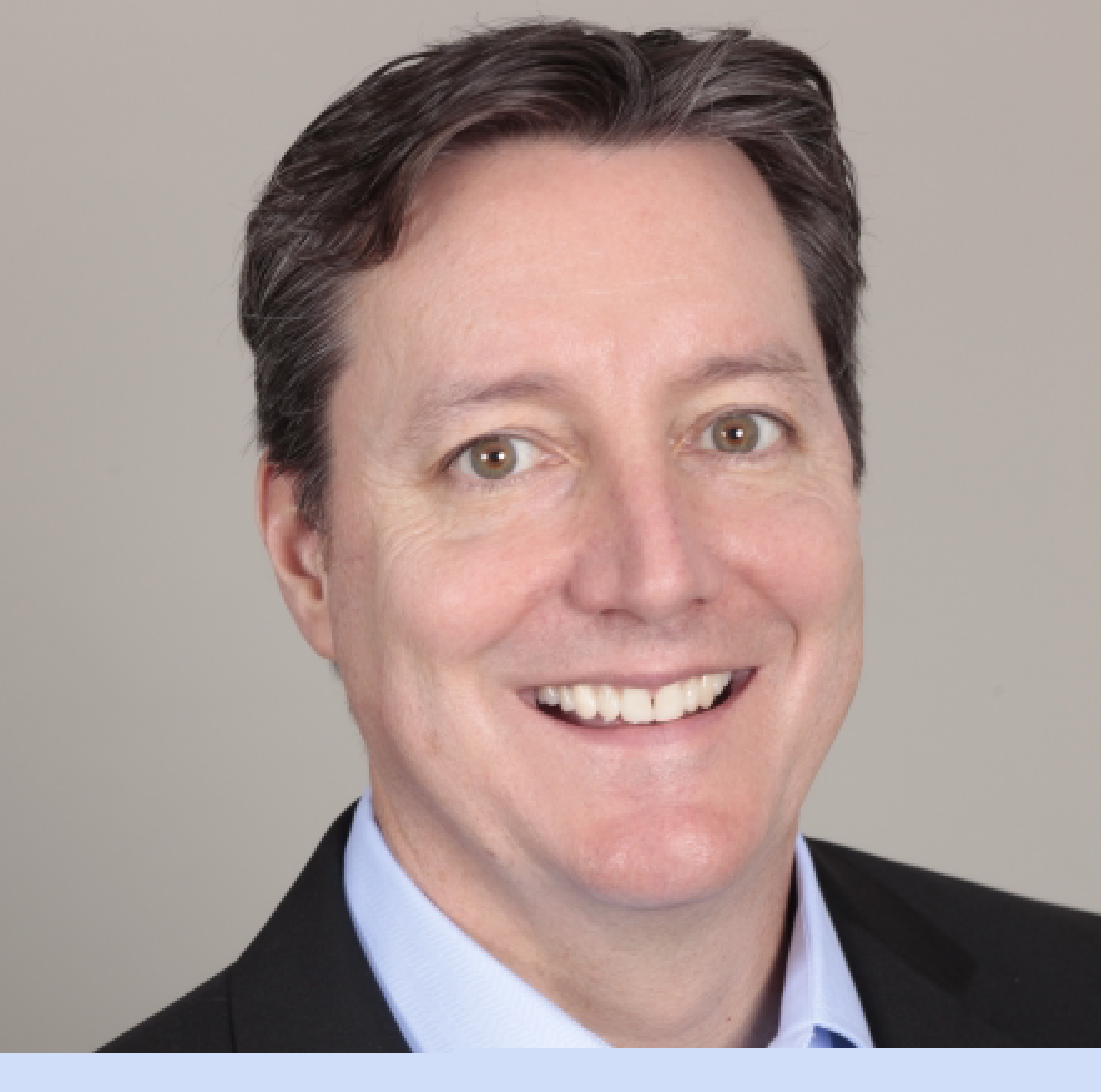
Pete Manzo is President and CEO of United Ways of California, which improves health, education and financial results for low-income children and families by enhancing and coordinating the community impact and advocacy work of California’s United Ways. Previously, Pete was Director of Strategic Initiatives for Advancement Project, a civil rights “action tank” that advances equity and expands opportunity for low income and vulnerable people, with offices in Los Angeles and Washington, D.C.; Executive Director and General Counsel of the Center for Nonprofit Management, where he directed the expansion of the Center's information, training, consulting, technology and search and compensation services to nonprofits. Pete is a graduate of Boalt Hall School of Law at the University of California, Berkeley; he also is a graduate of the London School of Economics, where he received a Master's degree in Political Sociology, and the University of Notre Dame, where he received a Bachelor's degree in Government.
Jasmine Marrow, Director of Nonprofit Strategy, GuideStar
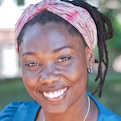 Jasmine Marrow has her master's degree of public policy from Mills College in Oakland, CA where she also earned her bachelor’s degree. Prior to her work at GuideStar, Marrow spent time as communications and operations coordinator at Great Oakland Public Schools, an education advocacy nonprofit. At the San Francisco Parks Trust, an urban greening nonprofit, she recruited volunteers, developed membership strategies, and connected with community members building community gardens. She is a board member at California Food Policy Advocates.
Jasmine Marrow has her master's degree of public policy from Mills College in Oakland, CA where she also earned her bachelor’s degree. Prior to her work at GuideStar, Marrow spent time as communications and operations coordinator at Great Oakland Public Schools, an education advocacy nonprofit. At the San Francisco Parks Trust, an urban greening nonprofit, she recruited volunteers, developed membership strategies, and connected with community members building community gardens. She is a board member at California Food Policy Advocates.
Andrew Means, Cofounder, The Impact Lab
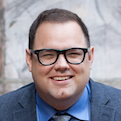 Andrew Means is the cofounder of The Impact Lab, a data science shop that works with nonprofits, foundations, and government agencies solving social problems. He has previously held leadership positions at University of Chicago’s Center for Data Science & Public Policy, Groupon, and the YMCA of Metropolitan Chicago. He holds a master's degree in public policy from the Harris School at the University of Chicago and is trained in Six Sigma from Motorola. Means is chairman of the board of directors at The Supply and a member of the board of directors at Ingenuity Inc.
Andrew Means is the cofounder of The Impact Lab, a data science shop that works with nonprofits, foundations, and government agencies solving social problems. He has previously held leadership positions at University of Chicago’s Center for Data Science & Public Policy, Groupon, and the YMCA of Metropolitan Chicago. He holds a master's degree in public policy from the Harris School at the University of Chicago and is trained in Six Sigma from Motorola. Means is chairman of the board of directors at The Supply and a member of the board of directors at Ingenuity Inc.
Sarah Newhall, Executive Vice President, Strategy & Insights, Blue State Digital
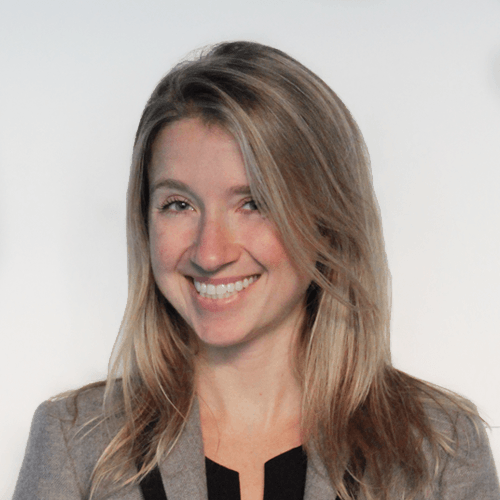 Sarah Newhall manages all facets of the data, strategy, and insights business for Blue State Digital, a creative agency and technology company that partners with some of the world’s leading brands, campaigns, nonprofits, and cultural institutions to inspire and mobilize people. Her expertise in strategy, digital analytics, data analysis, online marketing, and testing has helped improve on a range of objectives for BSD's clients across industries and verticals.
Sarah Newhall manages all facets of the data, strategy, and insights business for Blue State Digital, a creative agency and technology company that partners with some of the world’s leading brands, campaigns, nonprofits, and cultural institutions to inspire and mobilize people. Her expertise in strategy, digital analytics, data analysis, online marketing, and testing has helped improve on a range of objectives for BSD's clients across industries and verticals.
Cole Nussbaumer Knaflic, Founder, Speaker, Author, Storytelling with Data
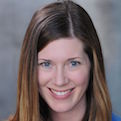 Cole Nussbaumer Knaflic tells stories with data. She is the author of Storytelling with Data: A Data Visualization Guide for Business Professionals and writes the popular blog storytellingwithdata.com. She’s worked at and with some of the most data-driven companies on the planet, including Google, Adobe, Genentech, JPMC, Target, and the World Bank. Her well-regarded workshops and presentations are highly sought after by data-minded individuals, companies, and philanthropic organizations all over the world.
Cole Nussbaumer Knaflic tells stories with data. She is the author of Storytelling with Data: A Data Visualization Guide for Business Professionals and writes the popular blog storytellingwithdata.com. She’s worked at and with some of the most data-driven companies on the planet, including Google, Adobe, Genentech, JPMC, Target, and the World Bank. Her well-regarded workshops and presentations are highly sought after by data-minded individuals, companies, and philanthropic organizations all over the world.
Perla Ni, Founder and CEO, GreatNonprofits
 Perla Ni is the CEO and founder of GreatNonprofits.org. Ni has executive experience in corporate, academic, and nonprofit sectors. She was the founder and former publisher of the Stanford Social Innovation Review, where she launched the successful www.ssireview.org website and blog. Prior to her work at SSIR, Ni co-founded Grassroots Enterprise, which was later acquired by global public relations firm, Edelman. A frequent speaker on nonprofits and philanthropy, Ni continues to write for Stanford Social Innovation Review. She has a bachelor's degree from the University of California, Berkeley, and a J.D. from Harvard Law School. In 2010, she was named a "Top Philanthropy Game Changer" by the Huffington Post.
Perla Ni is the CEO and founder of GreatNonprofits.org. Ni has executive experience in corporate, academic, and nonprofit sectors. She was the founder and former publisher of the Stanford Social Innovation Review, where she launched the successful www.ssireview.org website and blog. Prior to her work at SSIR, Ni co-founded Grassroots Enterprise, which was later acquired by global public relations firm, Edelman. A frequent speaker on nonprofits and philanthropy, Ni continues to write for Stanford Social Innovation Review. She has a bachelor's degree from the University of California, Berkeley, and a J.D. from Harvard Law School. In 2010, she was named a "Top Philanthropy Game Changer" by the Huffington Post.
Cheryl Phillips, Investigative Data Journalist; Hearst Professional in Residence, Graduate Program in Journalism, Stanford University
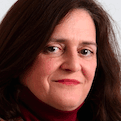 Cheryl Phillips is a Hearst Professional in Residence at Stanford and is cofounding the Stanford Computational Journalism Lab. Previously, she worked for The Seattle Times (2002-2014), as an investigative reporter and editor, most recently she served as the paper’s data innovation editor, helping the newsroom tell stories with data in a variety of ways. Her last work there was part of staff coverage of a deadly mudslide which was awarded the 2015 Pulitzer Prize for breaking news. Also in Seattle, she was part of coverage of a police shooting which received the Pulitzer for breaking news in 2010. She has taught how to find and tell stories with data in the journalism field for many years.
Cheryl Phillips is a Hearst Professional in Residence at Stanford and is cofounding the Stanford Computational Journalism Lab. Previously, she worked for The Seattle Times (2002-2014), as an investigative reporter and editor, most recently she served as the paper’s data innovation editor, helping the newsroom tell stories with data in a variety of ways. Her last work there was part of staff coverage of a deadly mudslide which was awarded the 2015 Pulitzer Prize for breaking news. Also in Seattle, she was part of coverage of a police shooting which received the Pulitzer for breaking news in 2010. She has taught how to find and tell stories with data in the journalism field for many years.
Jake Porway, Founder and Executive Director, DataKind
 Jake Porway is the founder and executive director of DataKind, a nonprofit that harnesses the power of data science in the service of humanity. He is an alumni of the New York Times R&D Lab, and has worked at Google and Bell Labs. A recognized leader in the data for good movement, he has spoken at IBM, Microsoft, Google, and the White House. He is also a PopTech Social Innovation Fellow and a National Geographic Emerging Explorer. He holds a bachelor’s degree in computer science from Columbia University and a master’s degree and a doctorate in statistics from University of California, Los Angeles.
Jake Porway is the founder and executive director of DataKind, a nonprofit that harnesses the power of data science in the service of humanity. He is an alumni of the New York Times R&D Lab, and has worked at Google and Bell Labs. A recognized leader in the data for good movement, he has spoken at IBM, Microsoft, Google, and the White House. He is also a PopTech Social Innovation Fellow and a National Geographic Emerging Explorer. He holds a bachelor’s degree in computer science from Columbia University and a master’s degree and a doctorate in statistics from University of California, Los Angeles.
Chris Royalty, Creative Director, Blue State Digital

Chris Royalty leads all the creative work of Blue State Digital’s Oakland office. Over his 6 years at BSD, he’s worked with the Art Institute of Chicago, Google, the Nature Conservancy, Major League Soccer, and Vogue. Prior to Blue State Digital, Royalty was the deputy director of video on the 2008 Obama Presidential Campaign, where he shot, edited, and managed hundreds of videos documenting the then-senator’s journey to the Oval Office. Royalty holds a master's degree in fine arts from the School of the Art Institute of Chicago and a bachelor's degree from the University of Richmond, and lives in Oakland with his family.
Ritu Sharma, CEO and Cofounder, Social Media for Nonprofits
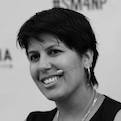 Ritu Sharma is the CEO of Social Media for Nonprofits (SM4NP), an organization bringing educational programs in information and communication technologies (ICT) to nonprofits worldwide through signature one-day conference series, webinars, content and online learning. In addition to the capacity building work, SM4NP amplifies social movements powered through social media through its global network of change makers. She speaks frequently around the world on a variety of topics in the nonprofit and social media spheres with a passion for effecting social change through social technologies. She writes a blog at the Huffington Post on the intersection of social media, social change and leadership.
Ritu Sharma is the CEO of Social Media for Nonprofits (SM4NP), an organization bringing educational programs in information and communication technologies (ICT) to nonprofits worldwide through signature one-day conference series, webinars, content and online learning. In addition to the capacity building work, SM4NP amplifies social movements powered through social media through its global network of change makers. She speaks frequently around the world on a variety of topics in the nonprofit and social media spheres with a passion for effecting social change through social technologies. She writes a blog at the Huffington Post on the intersection of social media, social change and leadership.
Lauren Shaughnessy, Director of Measurement and Learning, Habitat for Humanity Greater San Francisco
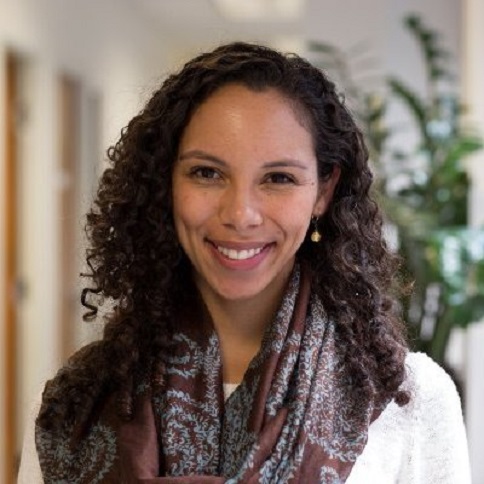
As the Director of Measurement and Learning, Lauren Shaughnessy works closely with Habitat’s program teams—Homeownership Development, Homebuyer Readiness, Neighborhood Revitalization, Volunteer Services—to develop strong systems to measure Habitat’s outcomes and progress in serving our key beneficiaries over time. She is also responsible for developing approaches for learning and improvement across the full organization as the size and diversity of Habitat’s portfolio work grows. Before joining Habitat GSF in May 2015, Shaughnessy worked as a consultant at The Bridgespan Group, advising organizations in the education, youth development, public health and community development fields. In this role, she had the opportunity to support multiple organizations with their performance measurement strategy and use of data to understand the impact of their programs. In addition to her mission-driven work, Shaughnessy has been a marketing professional in the corporate sector. She holds a BBA and MBA from the University of Michigan’s Ross School of Business.
Sarah Twombly, Strategy Director, Blue State Digital
Sarah Twombly is one of Blue State Digital’s most seasoned strategists, leading efforts across consumer, nonprofit, and advocacy for clients like Colgate, Google, the Art Institute of Chicago, the Rockefeller Foundation, Massachusetts Institute of Technology, and Lloyd’s Bank. Prior to joining BSD, Twombly worked as a literary agent, representing best-selling authors and helping steer the creation and execution of international marketing campaigns. Before that, she honed her understanding of culture and community as an ethnographer and cultural anthropologist, doing fieldwork in places as far afield as the Himalayas and the townships of South Africa.
Rates and Registration
- Early Bird Rate (Effective through January 15): $500
- Regular Rate (Effective January 16 through February 8): $575
- Additional Fee for February 10 Half-day Intensive: $200
Conference Facility and Location
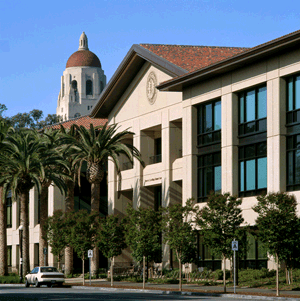 Frances C. Arrillaga Alumni Center
Frances C. Arrillaga Alumni Center
326 Galvez Street
Stanford, CA 94305-6105
The plenary sessions on February 9 will be held at the Frances C. Arrillaga Alumni Center, a state-of-the-art facility located on Stanford University's campus. More information about the Frances C. Arrillaga Alumni Center, including public transportation, directions, and parking, is available here. The intensive sessions on February 10 will be held at other locations on campus, and registered participants will be sent detailed information about the locations before the conference starts.
View a Google map of the Stanford campus with the conference venue pinpointed.
Stanford is located between San Francisco and San Jose in the heart of Silicon Valley. The campus's 8,100 acres reach from the rural foothills of the Santa Cruz Mountains to the Stanford Shopping Center in Palo Alto. Stanford is conveniently located between two major airports—25 miles south of San Francisco International Airport and 20 miles north of San Jose International Airport. Mass transit is available from both airports to the Stanford campus and area hotels:
Find information about the free Stanford Marguerite Shuttle here.
Find information about Caltrain here.
Find information about Bay Area Rapid Transit (BART) here.
The campus and surrounding areas offer a myriad of opportunities for recreation and sightseeing. World-class shopping and dining are located only a mile away at the Stanford Shopping Center. A half hour drive north brings you to San Francisco. A two hour drive south brings you to Carmel-by-the-Sea, where you can take in breathtaking views of the Pacific Ocean. To find out more, visit Stanford’s Visitor Information Services.
TOP OF PAGE
Host & Sponsors:
Produced by:
Stanford Social Innovation Review (SSIR) informs and inspires millions of social change leaders from around the world and from all sectors of society—nonprofits, business, and government. With webinars, conferences, magazines, online articles, podcasts, and more, SSIR bridges research, theory, and practice on a wide range of topics, including human rights, impact investing, and nonprofit business models. ssir.org
Visionary Sponsor:



